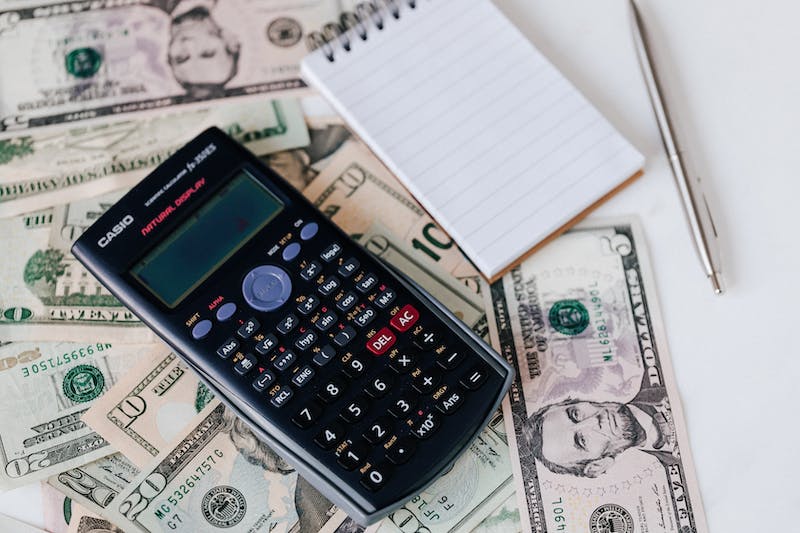Your company is making duplicate payments. At roughly one in a thousand payments being made to suppliers being duplicates, it is probable that your accounts payable department has made a duplicate payment today, and that is a fact. This article is not suggesting you need to perform regular accounts payable reviews, it is making it clear that you have to. If you want decent relationships with your suppliers(and you do) and you want clear and concise reports going through to HMRC and your auditors, accounts payable audits and reviews need to be something you look forward to.
One way of easing the difficulties of keeping the accounts payable record in good order is a regular external audit or review of the whole of accounts payable. Many companies employ software to 'audit as you go' and this can work well, but the controls in any system always cause problems despite solving others. In other words, a fresh pair of eyes is often a good things as it keeps everyone honest. External auditors makes sure that you are using reasonable tactics to allocate monies and that you are being realistic with you methods. An accounts payable review helps the head of AP sleep at night because it means that the system is working as it should and can be understood by other departments. An external audit makes sure that your AP accounts are in good order.
How can an Accounts Payable Audit Recover Money?
Top of Page
A duplicate payment review, like a comprehensive accounts payable audit, typically involves a detailed examination of your accounts payable records and processes to identify instances of duplicate payments. While it may not provide the same level of depth and coverage as a full audit, it can still be a valuable exercise in improving your financial processes and ensuring the accuracy of your payments. Here's how you can consider getting a duplicate payment review:
-
Internal Review: You can conduct an internal review of your accounts payable records to identify potential instances of duplicate payments. This can be done by comparing payment records, invoices, and supporting documentation to identify any duplicate or overpaid invoices. Ensure that your internal audit or finance team is trained in duplicate payment detection techniques.
-
Audit Software: Some audit software and tools, including those specifically designed for accounts payable, may offer functionalities to help you identify duplicate payments. These tools often have features that can automatically flag potential duplicates based on various criteria.
-
Consult with Experts: Consider seeking guidance from accounting or audit professionals who specialize in accounts payable processes. They can provide advice on conducting a duplicate payment review, recommend best practices, and assist in identifying potential duplicates.
-
Educational Resources: Look for educational resources and guides online that provide insights into conducting duplicate payment reviews. These resources may offer checklists and step-by-step instructions to help you get started.
-
External Consultants: If you have a large or complex accounts payable process and suspect significant issues with duplicate payments, you may consider engaging external consultants or auditors with expertise in accounts payable reviews. While this may involve a cost, their specialized knowledge can help you identify and rectify duplicate payment issues efficiently.
-
Peer Networks: Connect with colleagues or industry peers who have experience in accounts payable and duplicate payment reviews. They may be willing to share their experiences and provide guidance on conducting effective reviews.
When conducting a duplicate payment review, it's essential to have a systematic approach, clear documentation, and a plan for addressing any identified issues. The goal is not only to identify duplicates but also to implement corrective measures to prevent future occurrences.
While a duplicate payment review may be less extensive and costly than a full audit, it can still provide valuable insights into your accounts payable processes and help you recover overpayments, improve internal controls, and ensure the accuracy of your financial records.

What about a No Win No Fee Duplicates Audit?
Top of Page
A "No Win, No Fee" duplicates audit, also known as a contingency-based audit, is an arrangement where a third-party auditing firm conducts a review of your accounts payable records to identify and recover overpayments or duplicate payments. Under this arrangement, the auditing firm is compensated only if it successfully identifies and recovers duplicate payments or overpayments. If no such payments are identified or recovered, you do not owe any fees to the auditing firm. Here's how it works:
-
Engaging the Audit Firm: You engage a specialized auditing firm that offers "No Win, No Fee" duplicates audit services. Typically, you do not need to pay any upfront fees for their services.
-
Audit Process: The auditing firm conducts a comprehensive review of your accounts payable records, invoices, payment history, and other relevant documentation. Their goal is to identify instances of duplicate payments, overpayments, or any other discrepancies that may result in financial recovery for your organization.
-
Identification of Issues: If the auditing firm identifies duplicate payments or overpayments, they will work with you to validate the findings and quantify the potential financial recovery.
-
Recovery Process: The auditing firm will assist you in recovering the identified overpayments or duplicate payments from vendors or suppliers. This may involve negotiations, communication, and documentation to support the recovery efforts.
-
Fee Structure: The auditing firm's compensation is contingent on their success in recovering funds for your organization. They typically charge a percentage of the recovered amount as their fee. If they do not recover any funds, you are not obligated to pay them any fees.
-
Documentation and Reporting: Throughout the process, the auditing firm will maintain clear documentation of their findings, recovery efforts, and financial outcomes. They will provide you with regular reports on their progress.
The "No Win, No Fee" duplicate payment audit arrangement can be appealing to organizations because it minimizes financial risk. You only pay a fee if the auditing firm successfully recovers funds for your organization. However, it's essential to carefully review the terms and conditions of the agreement with the auditing firm, including the fee structure, the percentage they charge for successful recoveries, and any additional costs or expenses.
Before engaging in a duplicates audit on a contingency basis, consider the following:
- Evaluate the reputation and track record of the auditing firm.
- Understand the specific terms of the agreement, including the fee structure and any exclusions.
- Ensure that the auditing firm complies with ethical and legal standards in their recovery efforts.
- Assess the potential financial benefit of the audit compared to the fees charged by the auditing firm.
While a "No Win, No Fee" duplicate payments audit can be a low-risk way to identify and recover overpayments, it's important to weigh the potential benefits against the costs and fees associated with the audit process.

Does a Supplier Receive Money for the Same Invoice Twice?
Top of Page
In some cases, a supplier may inadvertently receive payment for the same invoice twice, resulting in a duplicate payment. Duplicate payments can occur due to various reasons, including administrative errors, system glitches, or miscommunication between the buyer and supplier. Here are some common scenarios in which a supplier might receive payment for the same invoice twice:
-
Payment Processing Errors: An accounts payable department may accidentally process the same invoice for payment more than once due to data entry errors, software glitches, or system malfunctions. This can result in multiple payments for the same invoice.
-
Double Submission: If a supplier submits the same invoice to the buyer multiple times, it can lead to duplicate payments. This may occur if the supplier's invoice submission process is not well-monitored or if there is a lack of communication between the parties.
-
Manual Mistakes: Human errors, such as miscommunication or misunderstanding between the buyer and supplier, can lead to duplicate payments. For example, if the supplier resubmits an invoice thinking that the original payment was not received, it could result in double payment.
-
Payment Confirmation Delays: Sometimes, there may be delays in receiving payment confirmation from the supplier's end. As a result, the buyer may mistakenly process a duplicate payment, believing that the initial payment was not made.
-
System Failures: Technical issues within the supplier's or buyer's payment processing systems can result in duplicate payments if the system does not properly record or reconcile payments.
It's important to note that duplicate payments are typically considered unintentional and are not a form of fraud by the supplier. Suppliers generally have an interest in resolving duplicate payment issues promptly to maintain a good business relationship with their customers.
To prevent and address duplicate payments:
- Implement strong internal controls and review processes within the accounts payable department to catch and rectify duplicate payments before they are processed.
- Maintain clear communication channels with suppliers to resolve any invoice discrepancies promptly.
- Use financial software and systems that have built-in checks to prevent the processing of duplicate payments.
- Conduct regular accounts payable audits or reviews to identify and rectify duplicate payment issues.
If a duplicate payment occurs, it's essential for both the buyer and the supplier to work together to resolve the issue promptly. Typically, the supplier will refund the excess payment to the buyer, ensuring that the financial records are corrected and the duplicate payment is rectified.

How Does a Supplier Reconcile a Duplicate Payment?
Top of Page
When a supplier receives a duplicate payment from a customer, it is essential to promptly reconcile the duplicate payment to ensure accurate financial records and prevent any potential issues or disputes. Here are the steps a supplier can take to reconcile a duplicate payment:
-
Identify the Duplicate Payment:
- First, the supplier should identify and confirm that they have received a duplicate payment. This may involve reviewing their bank statements, payment records, and communication with the customer.
-
Contact the Customer:
- The supplier should reach out to the customer who made the duplicate payment. Open and transparent communication is crucial in resolving the issue. Contact the appropriate department or individual responsible for accounts payable at the customer's organization.
-
Provide Documentation:
- To facilitate the reconciliation process, the supplier should provide documentation supporting the duplicate payment. This may include copies of invoices, payment receipts, bank statements, and any other relevant records.
-
Request a Refund or Credit:
- The supplier should request that the customer issue a refund or credit for the duplicate payment amount. This can be done through formal communication, such as an email or letter, outlining the details of the duplicate payment and the specific amount to be refunded.
-
Set a Timeline:
- Establish a clear timeline for the resolution of the issue. Specify when the refund or credit is expected to be processed and received. This helps ensure that the matter is resolved promptly.
-
Follow Up:
- If the customer agrees to refund or credit the duplicate payment, the supplier should follow up to ensure that the refund is processed according to the agreed-upon timeline. Confirm with the customer once the refund is received.
-
Update Records:
- After the duplicate payment issue is resolved, the supplier should update their financial records to reflect the corrected payment status. This includes reconciling the accounts and ensuring that the duplicate payment no longer appears as outstanding.
-
Prevent Future Duplicates:
- To prevent future occurrences of duplicate payments, the supplier may want to review and improve their internal processes for invoice management, payment reconciliation, and communication with customers.
-
Maintain Documentation:
- Keep a record of all communication and documentation related to the duplicate payment and its resolution. This documentation may be valuable for audit purposes or in case of any future questions or disputes.
-
Express Appreciation:
- It's a good practice for the supplier to express appreciation to the customer for their cooperation and prompt resolution of the issue. Maintaining a positive business relationship is important.
Reconciling a duplicate payment is in the best interest of both the supplier and the customer. It helps maintain financial accuracy, prevents potential disputes, and ensures that both parties can continue their business relationship smoothly.

What if a Supplier Allocates a Duplicate Payment Against Other Outstanding Invoices?
Top of Page
Allocating a duplicate payment against other outstanding invoices is one way that a supplier can handle the situation when they receive a duplicate payment from a customer. This approach allows the supplier to apply the excess funds to the customer's existing accounts receivable balance rather than issuing a refund. However, it's important to follow specific steps and maintain transparency in the process. Here's how a supplier can handle this situation:
-
Identify the Duplicate Payment:
- Confirm that a duplicate payment has been received by thoroughly reviewing payment records and bank statements.
-
Contact the Customer:
- Notify the customer promptly about the duplicate payment. Reach out to the customer's accounts payable department or the relevant contact person responsible for payments.
-
Request Permission:
- Explain the situation to the customer and request their permission to allocate the duplicate payment against outstanding invoices. Clearly communicate the reason for this approach, which is often to simplify the reconciliation process and avoid the need for a refund.
-
Provide Documentation:
- Furnish supporting documentation, such as copies of invoices, payment receipts, and records, to demonstrate the duplicate payment and how it is proposed to be applied.
-
Obtain Customer Agreement:
- Secure the customer's agreement in writing or through formal communication, acknowledging their consent to allocate the duplicate payment against outstanding invoices. Ensure that the customer is clear about which invoices will be affected and the revised account balance.
-
Allocate the Payment:
- Allocate the duplicate payment to the customer's outstanding invoices according to the agreement. Adjust the accounts receivable records to reflect the allocation accurately.
-
Notify the Customer:
- Inform the customer once the allocation has been completed, providing them with updated account statements and payment receipts reflecting the allocation.
-
Record Keeping:
- Maintain clear and accurate records of all communication, agreements, and actions taken related to the duplicate payment and its allocation. This documentation is important for auditing and reconciliation purposes.
-
Maintain Open Communication:
- Continue to maintain open and transparent communication with the customer throughout the process. Address any questions or concerns they may have and provide timely updates.
-
Follow Up and Confirm Resolution:
- Follow up with the customer to ensure that the duplicate payment has been successfully allocated and that they are satisfied with the resolution.
Allocating a duplicate payment against outstanding invoices can be a practical solution when both the supplier and the customer agree to this approach. It can help simplify the reconciliation process and avoid the administrative steps associated with issuing a refund. However, the key to this method is obtaining the customer's consent and maintaining clear documentation throughout the process to ensure transparency and accuracy.

Is It More Often Put Into a Holding Account?
Top of Page
Allocating a duplicate payment to a holding account is another common approach that suppliers use to manage the receipt of duplicate payments. Instead of immediately applying the excess funds to outstanding invoices or issuing a refund, the supplier places the duplicate payment amount into a separate holding or suspense account. Here's how this process typically works:
-
Identify the Duplicate Payment:
- The supplier confirms the receipt of a duplicate payment through a review of payment records and bank statements.
-
Segregate the Duplicate Payment:
- Instead of applying the duplicate payment directly to outstanding invoices, the supplier transfers the duplicate payment amount to a designated holding or suspense account. This segregates the funds from the regular accounts receivable.
-
Contact the Customer:
- The supplier contacts the customer's accounts payable department or relevant contact person to notify them of the duplicate payment and the intention to hold the excess funds temporarily.
-
Explain the Holding Account:
- The supplier informs the customer about the creation of a holding or suspense account specifically for managing duplicate payments. This account is used to keep the excess funds separate from regular receivables.
-
Request Resolution:
- The supplier requests guidance from the customer on how they would like to resolve the duplicate payment. Options may include allocating the funds to specific invoices, applying the funds as a credit for future purchases, or issuing a refund.
-
Maintain Transparency:
- Throughout the process, the supplier maintains transparency with the customer by providing regular updates on the status of the holding account and any actions taken.
-
Customer Agreement:
- Once the customer and supplier agree on the resolution, they formalize the agreement in writing or through formal communication. This agreement specifies how the funds will be managed in the holding account.
-
Execute Resolution:
- Based on the agreed-upon resolution, the supplier takes the necessary steps to allocate the funds from the holding account accordingly. This may involve applying the funds to specific invoices, crediting the customer's account, or issuing a refund.
-
Record Keeping:
- Detailed records are maintained throughout the process, including documentation of the agreement with the customer, actions taken, and any changes to account balances.
-
Final Confirmation:
- The supplier confirms with the customer that the duplicate payment has been successfully resolved according to the agreed-upon terms.
Using a holding account allows the supplier to maintain control over the duplicate payment while working collaboratively with the customer to reach a resolution. This approach provides flexibility in addressing the duplicate payment, as the supplier and customer can decide how to best utilize the excess funds based on their specific needs and circumstances.

What is the Maximum Length of Time to Recover an Overpayment?
Top of Page
The maximum length of time to recover an overpayment can vary depending on several factors, including legal regulations, contractual agreements, and the specific circumstances surrounding the overpayment. There is no universally fixed time limit for recovering overpayments that applies to all situations. Instead, the timeline for recovery is influenced by the following considerations:
-
Contractual Agreements: The terms and conditions outlined in the contract between the parties may specify the timeframes and procedures for recovering overpayments. These contractual provisions may set deadlines for notifying the other party and initiating the recovery process.
-
Statute of Limitations: In some jurisdictions, there may be statutory limitations on how long a party has to initiate legal action to recover overpayments. The statute of limitations varies by jurisdiction and may range from a few years to several years. It's essential to consult with legal counsel to understand the applicable statute of limitations in your jurisdiction.
-
Prompt Detection: Timeliness in detecting overpayments is crucial. The sooner an overpayment is identified, the easier it is to initiate recovery processes. Many organizations have internal policies and procedures that encourage the prompt identification and resolution of overpayments.
-
Communication and Cooperation: The speed of recovery may also depend on the willingness and cooperation of both parties involved. Open and transparent communication can expedite the resolution process.
-
Negotiation and Agreement: The parties may engage in negotiations to determine the terms and timeline for repaying the overpayment. The length of this negotiation process can vary depending on the complexity of the situation and the parties' willingness to reach an agreement.
-
Legal Action: If the overpayment is not resolved through negotiation, legal action may be necessary. Legal proceedings can extend the timeline for recovery and may involve additional time for court processes, hearings, and judgments.
-
Recovery Methods: The method chosen for recovering the overpayment can affect the timeline. For example, if the overpayment is recovered through offsetting future payments, the timing will depend on the payment schedule and the agreed-upon terms.
Given the variability in factors affecting the timeline for recovering overpayments, it is essential for both parties involved to address overpayments promptly, maintain clear communication, and work toward a resolution in good faith. Legal counsel can provide guidance on the specific legal requirements and limitations related to overpayment recovery in your jurisdiction and under your contract.